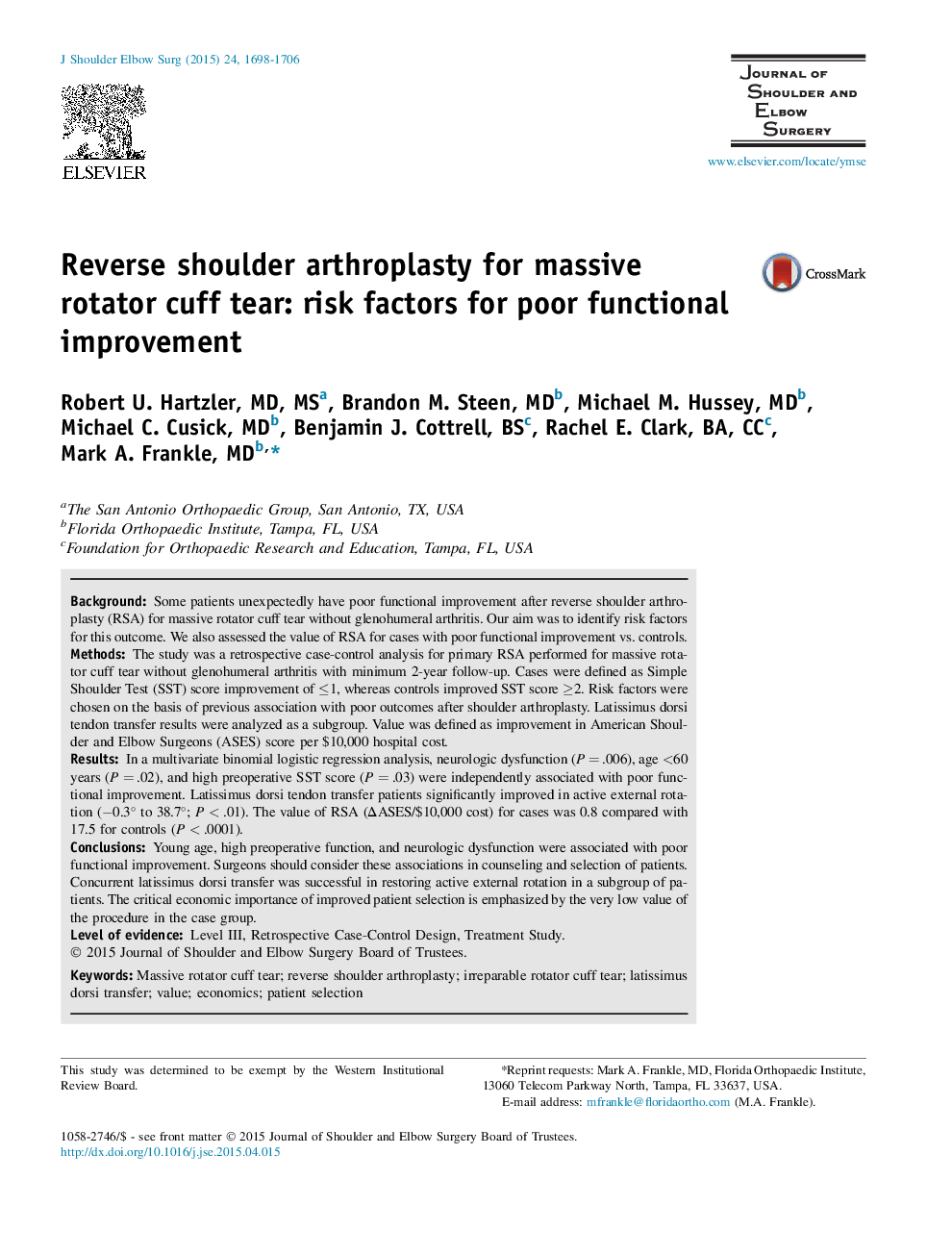| کد مقاله | کد نشریه | سال انتشار | مقاله انگلیسی | نسخه تمام متن |
|---|---|---|---|---|
| 4073255 | 1266977 | 2015 | 9 صفحه PDF | دانلود رایگان |
BackgroundSome patients unexpectedly have poor functional improvement after reverse shoulder arthroplasty (RSA) for massive rotator cuff tear without glenohumeral arthritis. Our aim was to identify risk factors for this outcome. We also assessed the value of RSA for cases with poor functional improvement vs. controls.MethodsThe study was a retrospective case-control analysis for primary RSA performed for massive rotator cuff tear without glenohumeral arthritis with minimum 2-year follow-up. Cases were defined as Simple Shoulder Test (SST) score improvement of ≤1, whereas controls improved SST score ≥2. Risk factors were chosen on the basis of previous association with poor outcomes after shoulder arthroplasty. Latissimus dorsi tendon transfer results were analyzed as a subgroup. Value was defined as improvement in American Shoulder and Elbow Surgeons (ASES) score per $10,000 hospital cost.ResultsIn a multivariate binomial logistic regression analysis, neurologic dysfunction (P = .006), age <60 years (P = .02), and high preoperative SST score (P = .03) were independently associated with poor functional improvement. Latissimus dorsi tendon transfer patients significantly improved in active external rotation (−0.3° to 38.7°; P < .01). The value of RSA (ΔASES/$10,000 cost) for cases was 0.8 compared with 17.5 for controls (P < .0001).ConclusionsYoung age, high preoperative function, and neurologic dysfunction were associated with poor functional improvement. Surgeons should consider these associations in counseling and selection of patients. Concurrent latissimus dorsi transfer was successful in restoring active external rotation in a subgroup of patients. The critical economic importance of improved patient selection is emphasized by the very low value of the procedure in the case group.
Journal: Journal of Shoulder and Elbow Surgery - Volume 24, Issue 11, November 2015, Pages 1698–1706
